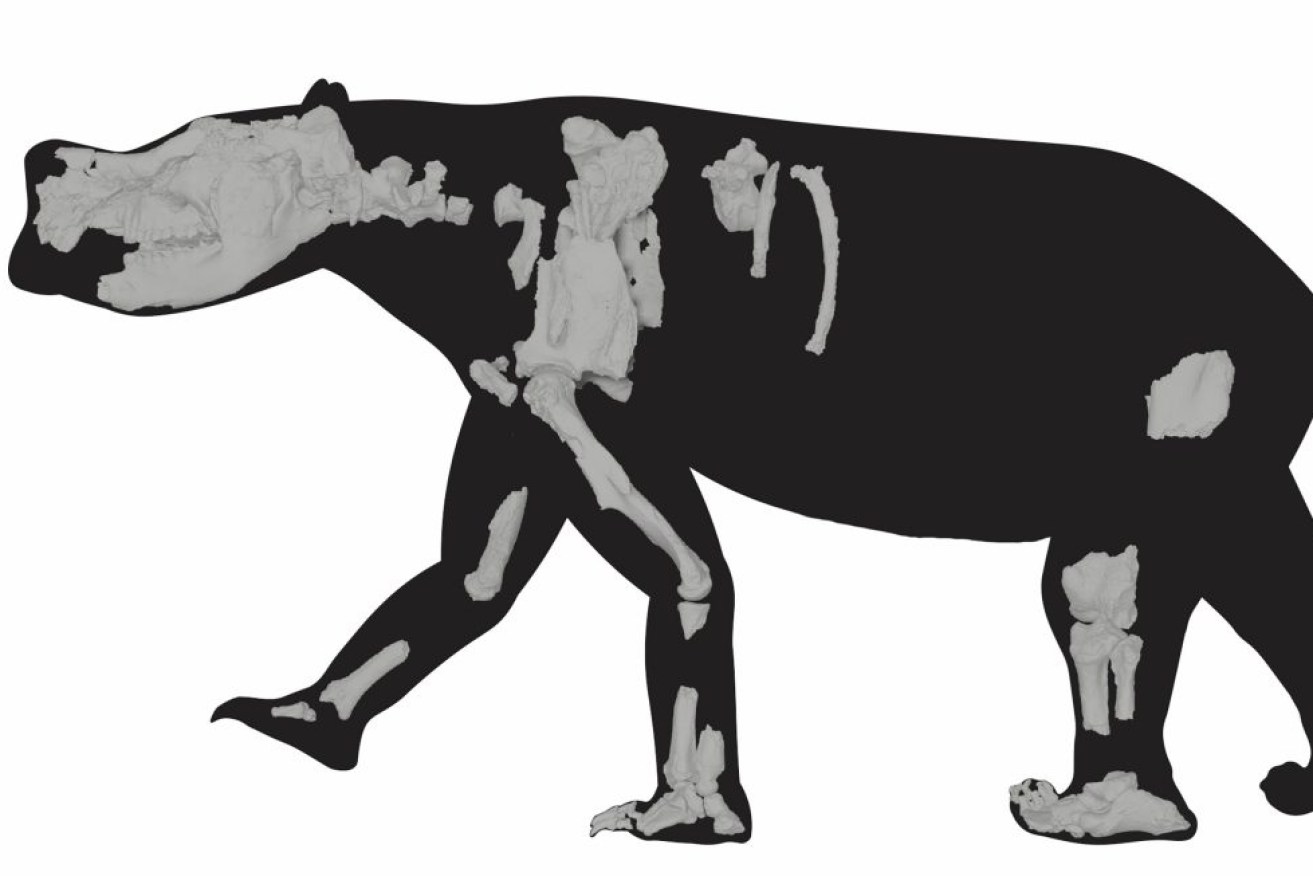SA megafauna discovery walks into history
A 3.5 million-year-old fossil found in outback SA has been identified as a new species of megafauna, with Flinders University researchers saying it had developed features allowing it to walk long distances despite weighing a quarter of a tonne.

An image of 'Ambulator keanei' found in South Australia. Image: AAP/Flinders University
Related to the better known Diprotodon and roughly resembling a giant wombat, remains of the 3.5 million-year-old marsupial show legs and feet that would have allowed it to roam much further than earlier relatives.
The team behind the discovery dubbed the creature Ambulator, meaning walker or wanderer because of these unique features.
“We don’t often think of walking as a special skill but when you’re big any movement can be energetically costly, so efficiency is key,” PhD candidate at Flinders, Jacob van Zoelen said.
Unlike most large herbivores of today, such as elephants and rhinoceroses that essentially walk on the tip of their toes, Ambulator’s heel bone made contact to the ground in a similar way to humans.
“This stance helps distribute weight when walking but uses more energy for other activities such as running,” van Zoelen said.
“So, diprotodontids such as Ambulator may have evolved this morphology to traverse great distances more efficiently. Eventually, this led to the evolution of the giant and relatively well-known Diprotodon.”
The remains of Ambulator were uncovered in 2017 on a remote station in northern South Australia and analysed using advanced 3D scans.
Earlier attempts to make sense of diprotodontid fossils faced hurdles, despite their having been an integral part of Australian ecosystem for millions of years until the last species became extinct about 40,000 years ago.
“Diprotodontids are distantly related to wombats – the same distance as kangaroos are to possums – so unfortunately there is nothing quite like them today,” van Zoelen said.
“As a result, paleontologists have had a hard time reconstructing their biology.”
Using 3D-scanning technology, the Flinders team was able to compare the partial skeleton with other diprotodontid material from collections all over the world to form what they believe is an accurate glimpse of the past.
-with AAP




